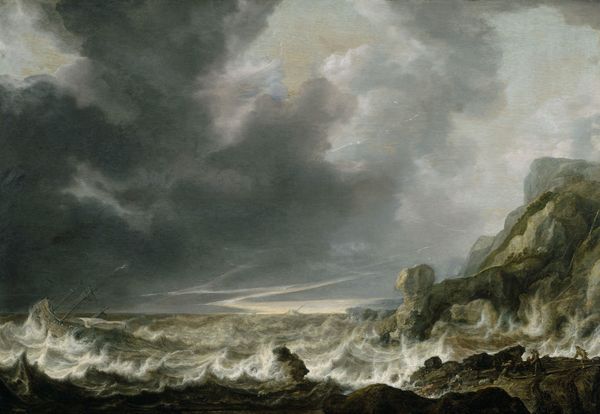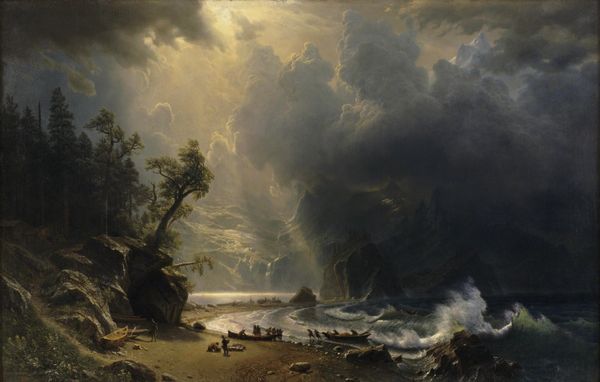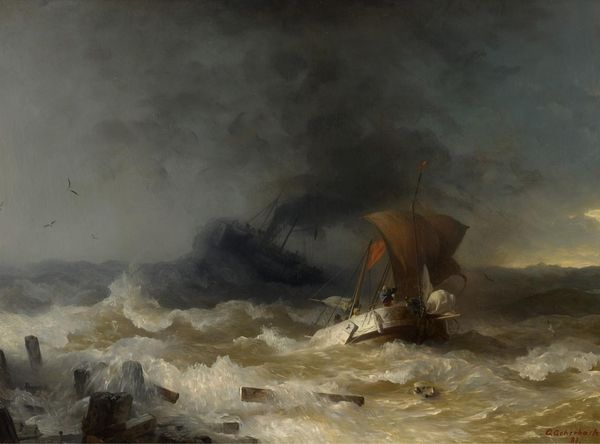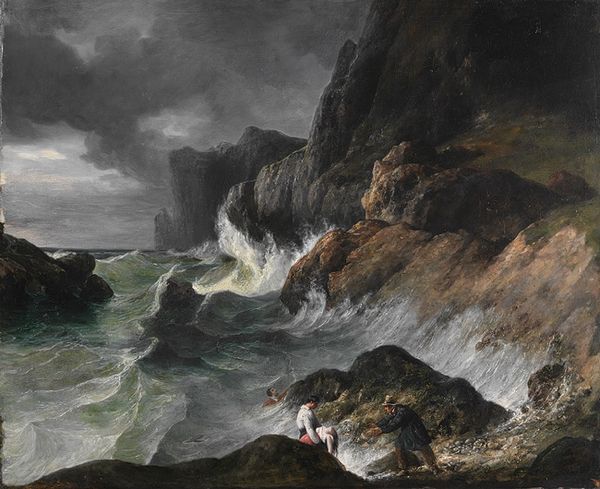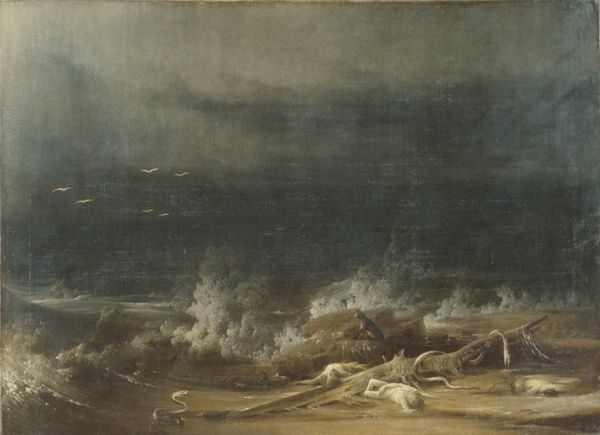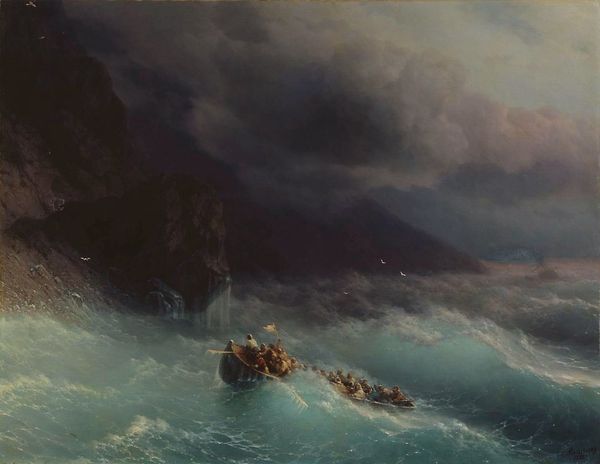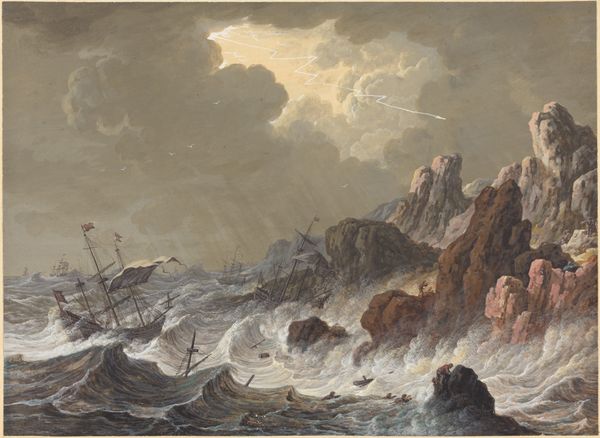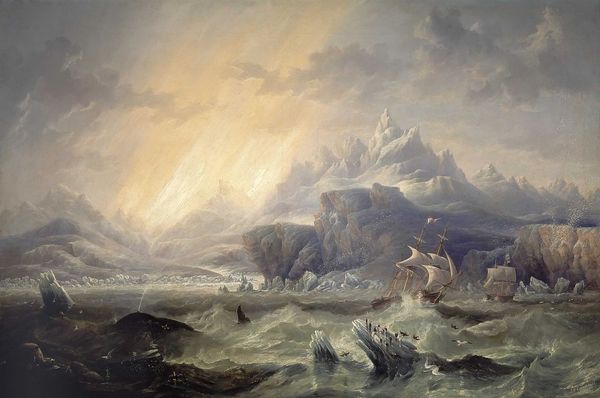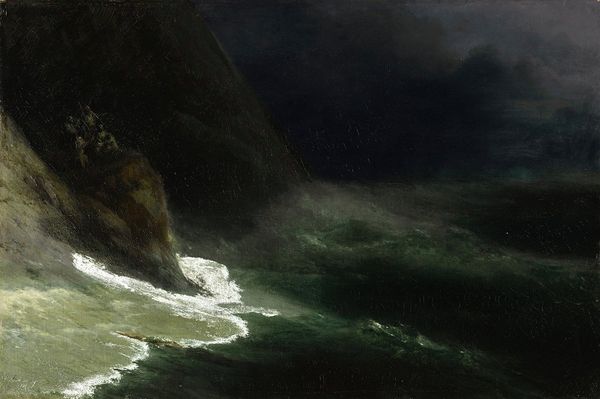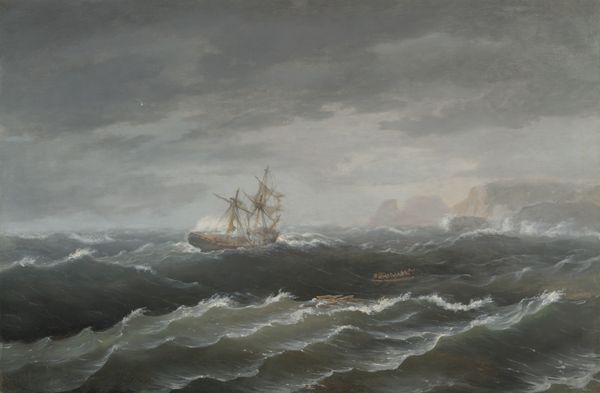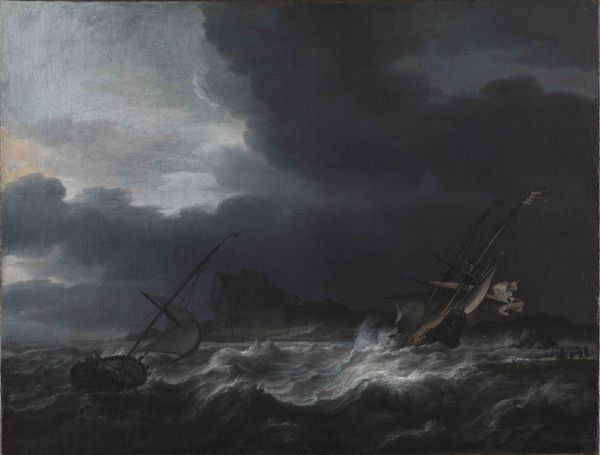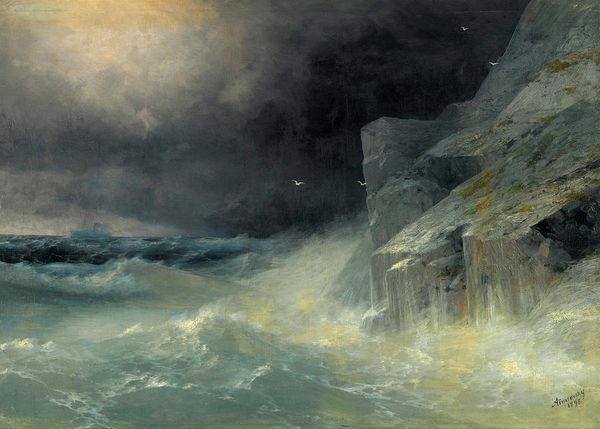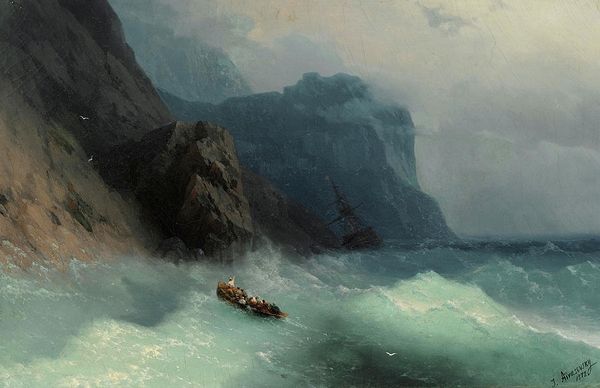
Rough Sea with a Steamer near the Coast of Norway 1847 - 1850
0:00
0:00
oil-paint, paper, canvas
#
oil-paint
#
landscape
#
charcoal drawing
#
paper
#
canvas
#
romanticism
Dimensions: 33.5 cm (height) x 42.5 cm (width) (Netto), 51 cm (height) x 65 cm (width) x 7.5 cm (depth) (Brutto)
Editor: So, this is Peder Balke’s "Rough Sea with a Steamer near the Coast of Norway," painted sometime between 1847 and 1850. The overwhelming feeling is drama. I’m struck by how Balke uses such dark oil paints to depict this powerful scene, even the sky. What do you see in the materials that Balke employed? Curator: Well, the use of oil on canvas here isn’t just about rendering a scene. The materiality speaks volumes about accessibility and the developing art market. Oil paints, by this period, are becoming increasingly standardized and available. Balke wasn't grinding his own pigments like earlier masters, which frees up time to explore abstraction within landscape painting. The relative ease of production using modern materials is something that makes this painting special, as opposed to prior uses for exclusively monumental, state-sponsored purposes. Editor: That’s fascinating! I hadn’t considered the impact of standardized materials. Did this affect the size or scale of artwork that became popular? Curator: Absolutely! Look at the scale here. This canvas isn’t monumental like a history painting designed for a palace. Its accessibility extends beyond the mere availability of paints; it reflects a changing audience and a new market where smaller, more intimate works could find buyers amongst the rising middle class. Consider the production and consumption intertwined – smaller, affordable materials facilitated a greater volume of artwork available to a much wider social circle. Editor: So, it's not just about the visual drama, but also the quiet revolution in art production and who could access art? Curator: Precisely. Balke isn't just showing us a rough sea, he’s also indirectly showing us the rough and tumble of the changing art world. A changing mode of painting created a material and intellectual change to how art was made. It helps to remember that there would have been a whole team involved with getting the paint from a pigment to a useable form for Balke. Editor: That perspective really transforms how I see this piece! Curator: It also highlights the inherent human labor involved in production. From a single artist to the team, Balke reminds of about the hidden costs involved.
Comments
statensmuseumforkunst almost 2 years ago
⋮
The Norwegian landscape painter Peder Balke originally trained as a house painter and went on to study fine art in Oslo, Stockholm, and Dresden. A great traveller, he stayed in Copenhagen in 1830 and 1844-45, becoming acquainted with several Danish painters. He lived in Paris for a while and visited London in 1849-50, where he would presumably have seen the works of J.M.W. Turner. In 1832 Balke travelled the Norwegian Sea along the coastline from Trondheim to North Cape, inspiring many of his marine scenes. The topography of this dramatic scene with a steamer in distress cannot be identified, but is based on impressions from this journey. His vibrant, dynamic manner of painting and high-impact subject matter sets Balke apart from all his Scandinavian contemporaries. His dramatic perception of nature may owe a debt to Turner.
Join the conversation
Join millions of artists and users on Artera today and experience the ultimate creative platform.
